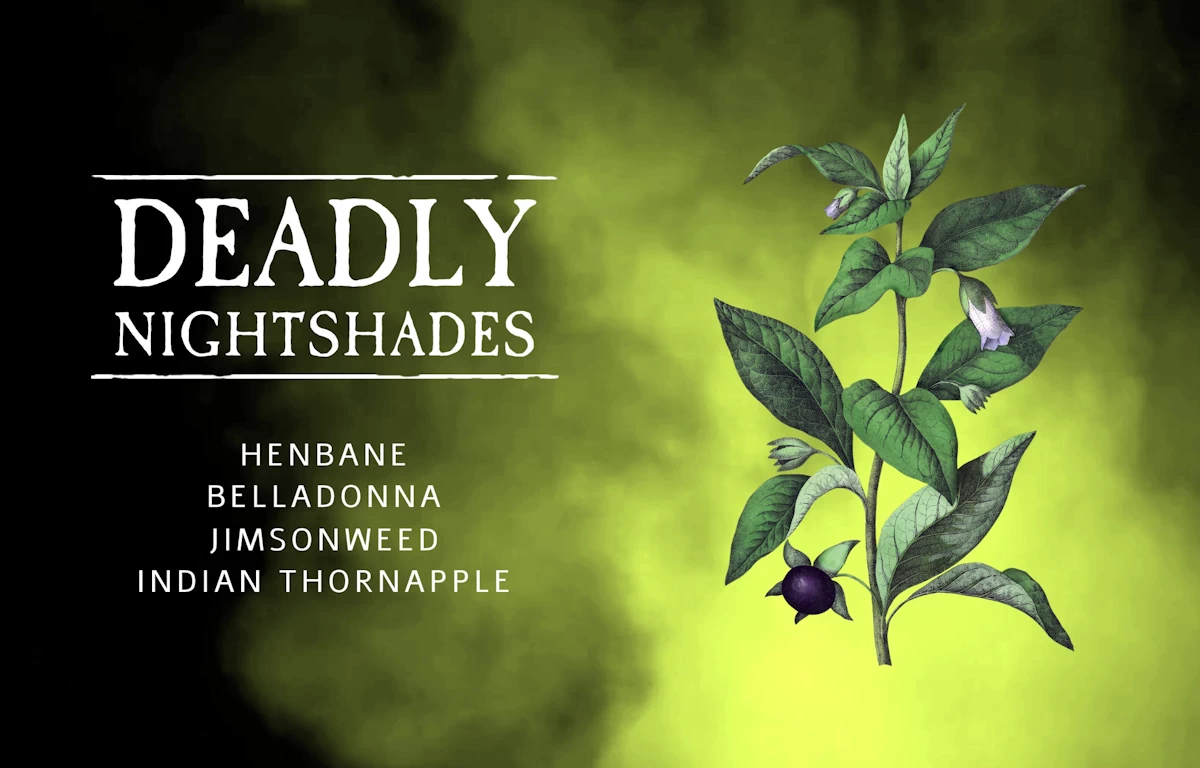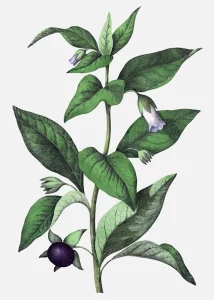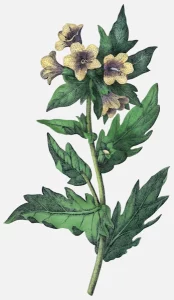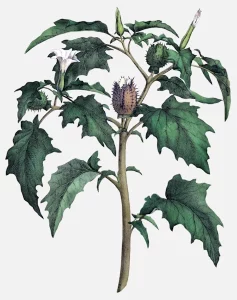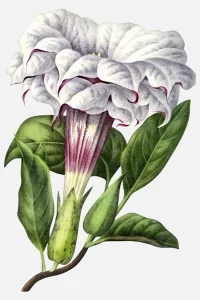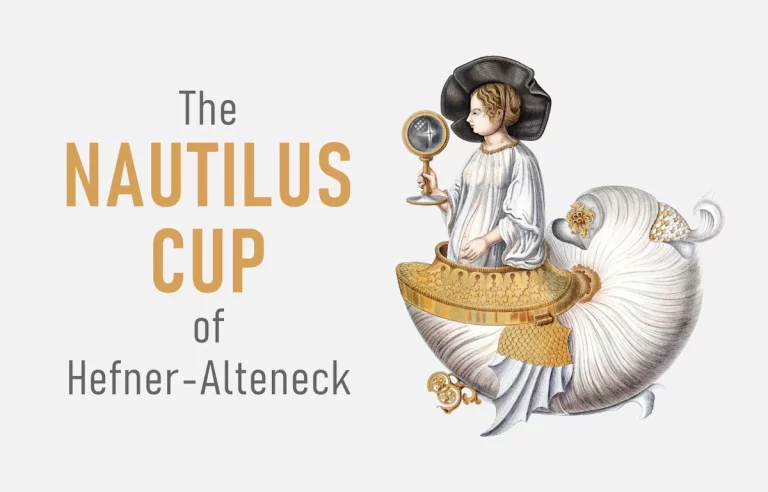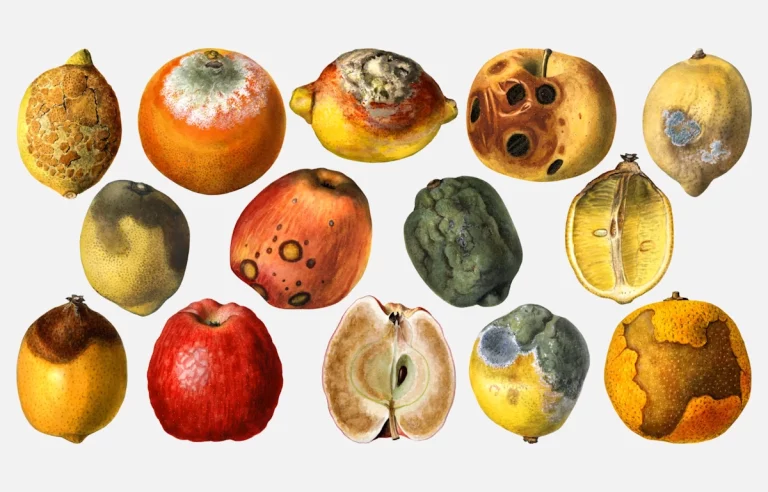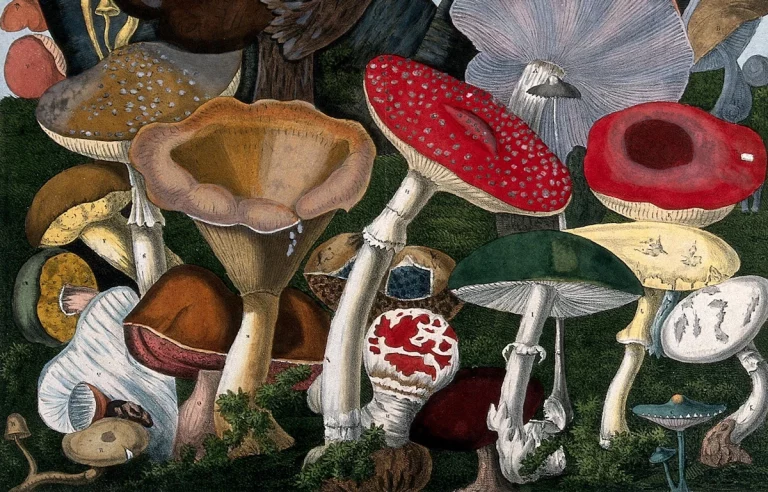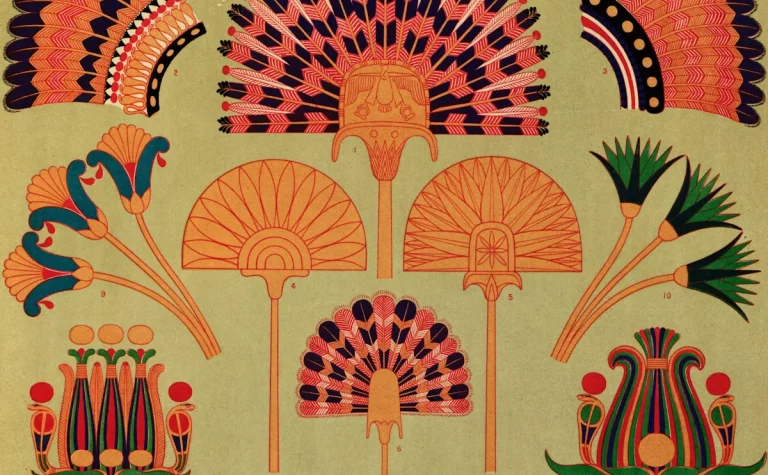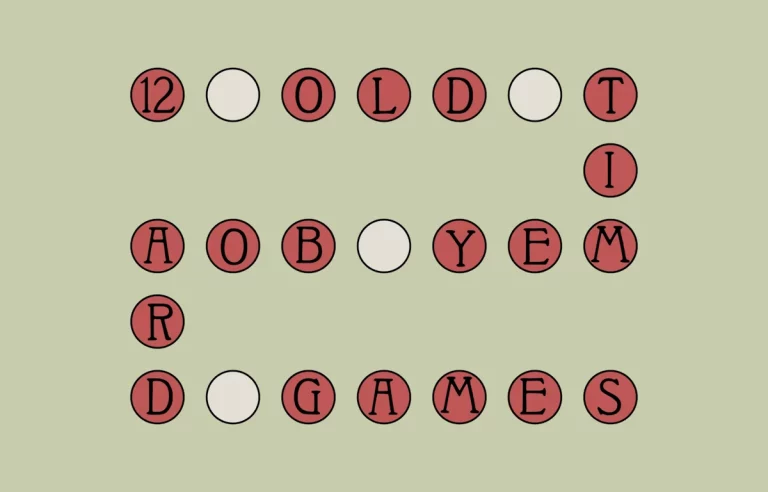Poisonous Nightshades of the Public Domain
The nightshade family of plants boasts many delicious vegetables, including potatoes, tomatoes, peppers and eggplants… and many poisonous nightshades too. Most of us are quite familiar with the tasty varieties, but unless you have a pointy black hat and live in a chicken hut you may not have encountered deadly nightshades like Belladonna or Henbane in real life. They aren’t found in any supermarkets. Yet they are essential ingredients in any respectable witch’s hovel, likely hanging to dry above her cauldron collection.
Belladonna (Atropa belladonna)
Don’t let the shiny black, sweet berries deceive you. Atropa belladonna, commonly known as belladonna or deadly nightshade, is a plant as deadly as its name suggests.
Atropa belladonna is one of the most toxic plants in existence. It has a long history of being used as a poison. Early humans applied the poison to their arrowheads. Additionally, it may have been used in ancient Rome to murder the emperor Augustus. 1000 years later Macbeth of Scotland used belladonna to poison English troops during a truce with Harold I of England, forcing an English retreat.
The name Belladonna (beautiful woman) originates from the plant’s cosmetic use by women during the Renaissance. Women put drops from belladonna into their eyes to cause a dilation of the pupils. This was viewed at the time as having a seductive effect. The plant is no longer used in this way, as side effects are numerous, including blindness with prolonged use.
Belladonna has also been used in a ritual to enhance female attractiveness in the ancient folk traditions of Romanians from Bukovinia (Moldovia/Ukraine). Young women dig up the nightshade during Shrovetide, plant 3 offerings in its place (bread, salt and brandy) and walk home with the root on their heads. In order for the spell to work she may not divulge her intentions to any inquirers.
Henbane (Hyoscyamus niger)
Henbane, also commonly known as Black Henbane or Stinking Nightshade, is another hallucinogenic and poisonous nightshade, fatal in large quantities. The origin of the word henbane is unclear but it dates back to at least 1265. The ‘hen’ most certainly refers to death, not chickens.
Historically henbane was consumed both as anesthesia and for its psychoactive properties, which include visual hallucinations and a sensation of flight. In ancient Greece, priestesses breathed in the smoke of burnt henbane to become soothsayers. By the middle ages, henbane was considered a dangerous plant used in witchcraft and necromancy. “Necromancers” were said to use henbane to summon demons and the dead. Likewise, “Witches” combined henbane with other deadly plants (mandrake, belladonna and jimsonweed) to create potions or ointments. Typically the ointments were applied to surfaces (like broomsticks) and then rubbed on the body in order to absorb the plant. This process avoided the gastrointestinal duress that eating or drinking the plant would cause.
Bonus Trivia: It is believed that Viking warrior may have consumed henbane in order to induce a state of berserker rage.
Bonus Bonus Trivia: Henbane was also traditionally used in beer. It fell out of usage sometime between the 11th-16th centuries, to be replaced by hops. The final nail in the henbane-beer coffin was the Bavarian Purity Law of 1516, which outlawed every ingredient in beer other than barley, hops, yeast and water. Any adventurous craft brewers out there want to try and bring it back?
Jimsonweed (Datura stramonium)
Nightshades number among the most deadly plants in the world. One of the most dangerous is Datura stramonium, known by the common names Thorn Apple, Jimsonweed, Devil’s Snare and Devil’s Trumpet. It is a toxic and hallucinogenic nightshade found in temperate climates around the world.
Indigenous people, such as the Aztecs, Navajo and Cherokee have used Datura Stramonium as a hallucinogen in sacred ceremonies. In Haiti it is called ‘zombie cucumber’ and is the central ingredient of a concoction used by voodoo priests to create zombies.
It is also considered an ingredient in witchcraft incantations, and its supposed use likely created the ideas of witches straddling broomsticks. Datura Stramonium, much like fellow nightshade Mandrake, has been said to have been applied to broomsticks to be absorbed into the body through the vagina. At some point in history, someone discovered that certain hallucinogenic compounds can be absorbed through the armpits, rectum and vagina, and that this method avoided intestinal discomforts that drinking the boiled plants might cause.
Datura was famously consumed by British soldiers during Bacon’s Rebellion, a rebellion of North American colonists in Jamestown Virginia between 1675-1676, and the soldiers spent 11 days drugged out of their minds, sitting naked in trees and generally behaving insanely.
The artist Georgia O’Keeffe was fond of Jimsonweed and her painting Jimson Weed/White Flower No. 1 (1932) holds the record for the highest selling painting by a woman at US$44.4 million (2014 auction).
Indian Thornapple (Datura metel)
A similar plant is Datura metel, known as Indian Thornapple, Hindu Datura, Metel, and (same as with Jimsonweed) Devil’s Trumpet. As with Jimsonweed, all parts of the plant are toxic. Even tiny quantities have been known to create hallucinations, convulsions and even comas.
Hope you enjoyed learning about deadly nightshades! We plan on eventually putting together a collection of deadly plants but it might be awhile… We’re busy cookin’ up some nightshades at the moment (potato wedges).


